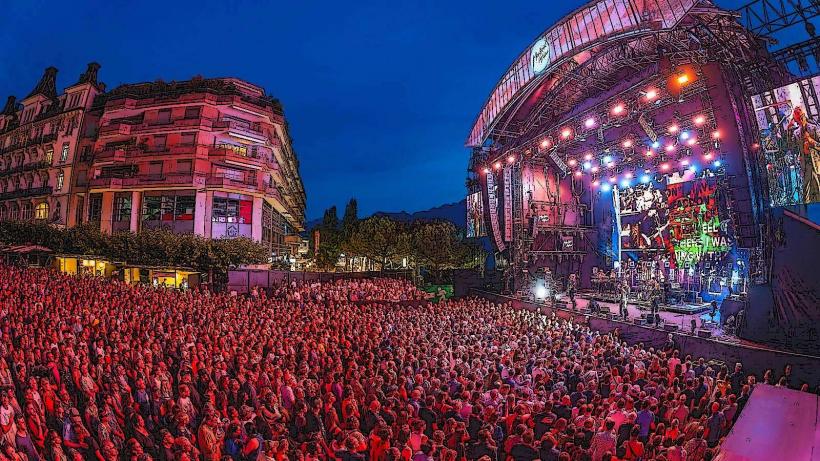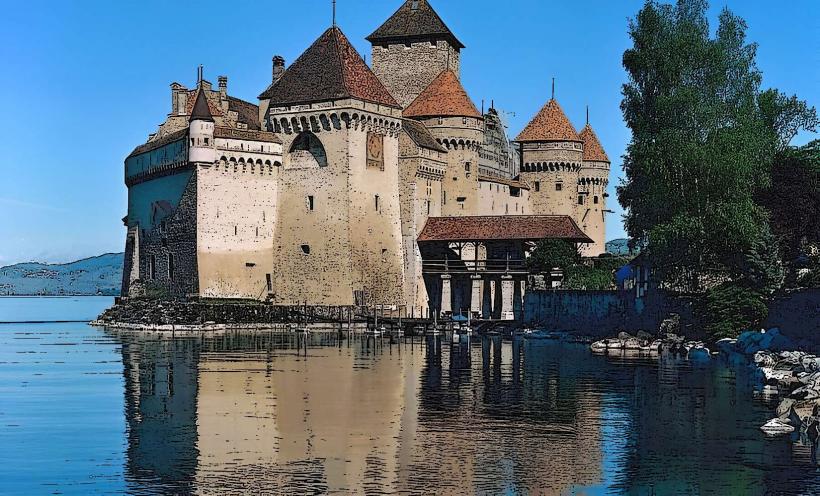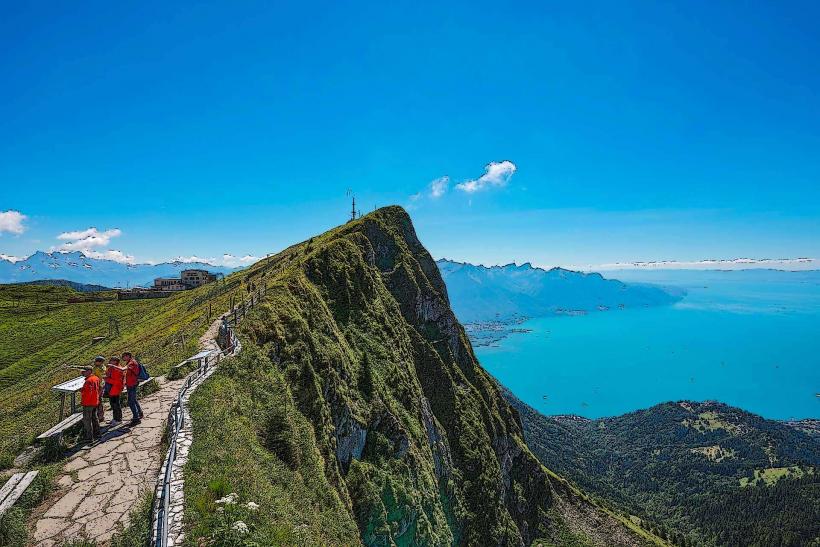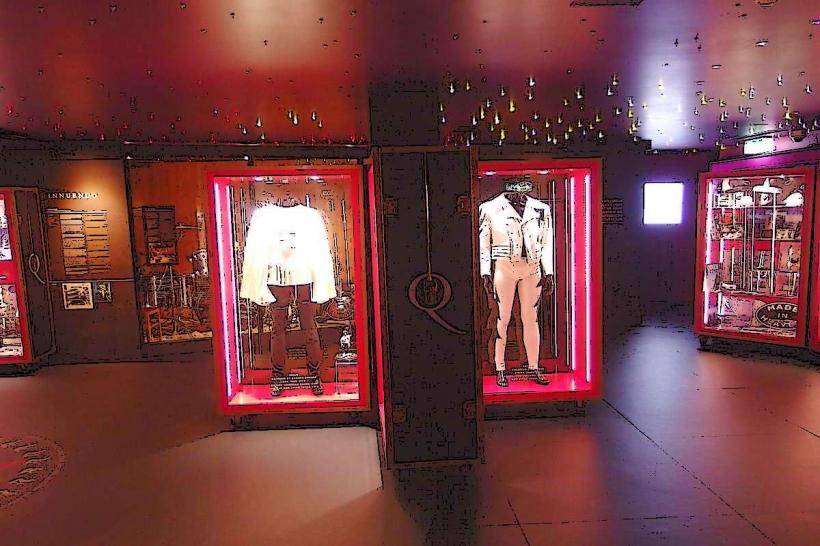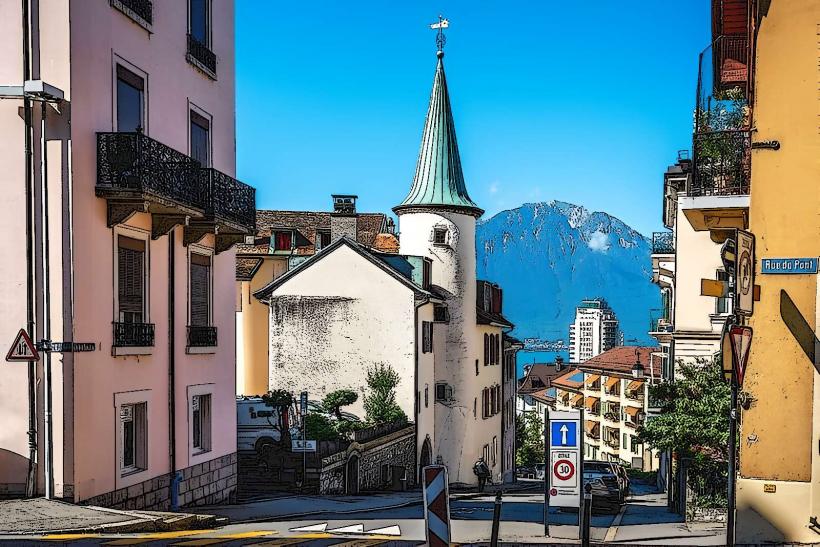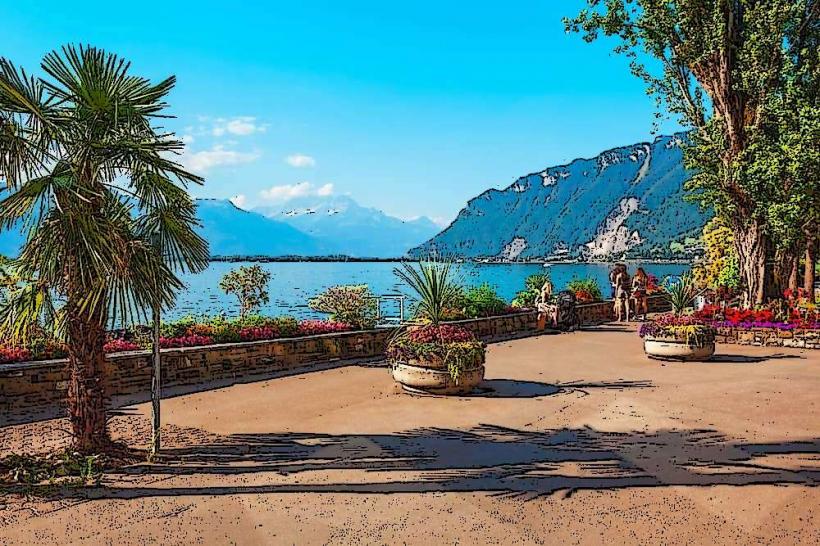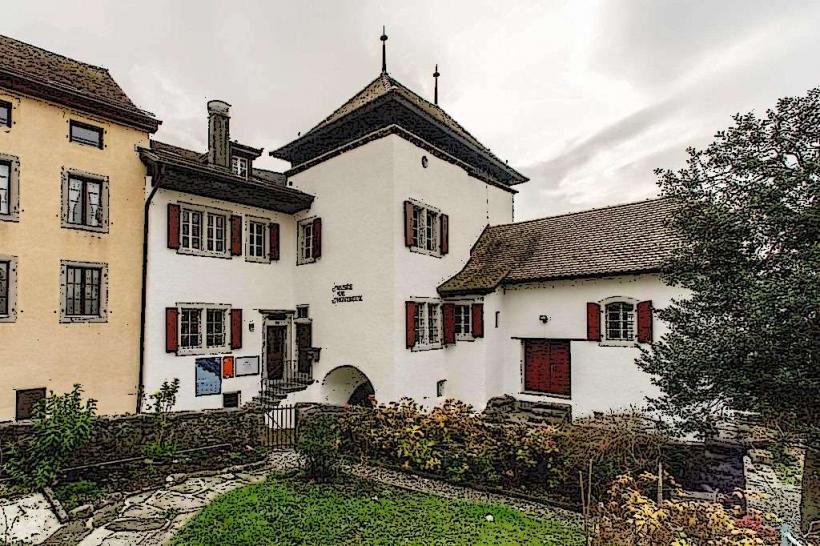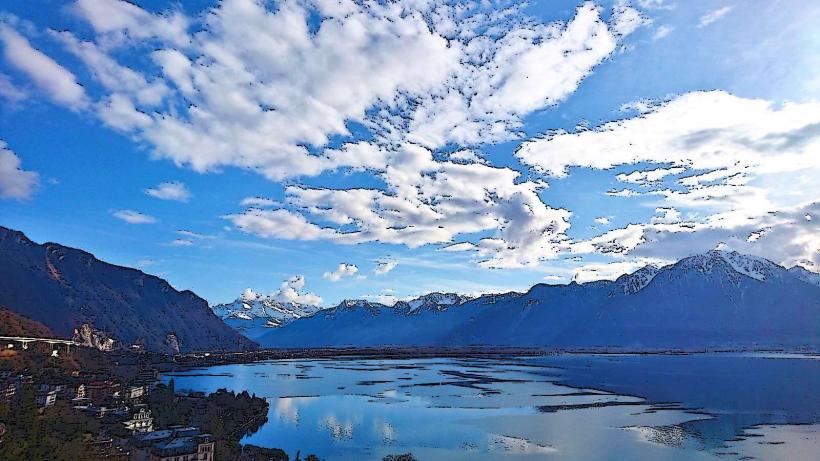Information
Landmark: Lavaux VineyardsCity: Montreux
Country: Switzerland
Continent: Europe
The Lavaux Vineyards are a UNESCO World Heritage Site located along the shores of Lake Geneva in the canton of Vaud, Switzerland. These terraced vineyards are renowned for their breathtaking views, rich history, and exceptional wine production, making them a major attraction for visitors seeking a combination of natural beauty, cultural heritage, and fine wine.
Key Features of Lavaux Vineyards
1. UNESCO World Heritage Status
- The Lavaux Vineyard Terraces were inscribed as a UNESCO World Heritage Site in 2007. The designation recognizes both the cultural landscape and the centuries of traditional wine production that have shaped the region.
- The vineyards, which stretch over 30 kilometers along the lake, are considered one of the most beautiful and historical wine-growing areas in the world.
2. The Terraced Landscape
- The Lavaux vineyards are famous for their steep terraces that rise dramatically above Lake Geneva. The terraces, which were created by generations of farmers, have been shaped over time to make the most of the region’s sunny microclimate and rich soil.
- The terraces are carved into the mountain slopes of the Lavaux region, offering panoramic views of the lake, the Alps, and surrounding villages. The terracing method, which involves building dry-stone walls to create flat areas for vine planting, is a testament to the area’s agricultural tradition.
3. Wine Production and Vine Varieties
- Lavaux is home to a wide variety of grapevines, with Chasselas being the most famous and widely grown grape in the region. Chasselas, a white grape variety, produces crisp, aromatic wines that are perfect for pairing with Swiss and local cuisine.
- The vineyards are divided into several sub-regions, each with its own characteristics and styles of wine. Some other grape varieties grown in Lavaux include Pinot Noir, Gamay, and Merlot.
- The Lavaux wines are known for their quality and are produced by local family-run wineries that use traditional winemaking techniques. Many of the wines produced here have received international recognition for their excellence.
4. Scenic Views and Hiking Trails
- One of the main attractions of Lavaux is its panoramic views. From the terraced vineyards, visitors can enjoy spectacular vistas of Lake Geneva, Montreux, Chillon Castle, and the towering Alps, including Mont Blanc.
- The Lavaux Vineyards Trail is a popular hiking route that takes visitors through the vineyards, offering access to the best viewpoints and an immersive experience in the heart of the vineyard landscape. The trail spans about 12 kilometers and passes through the picturesque villages of Cully, Rivaz, Epesses, and Denges, with plenty of opportunities to sample local wines and explore the history of the region.
- The trail is well-marked, and there are several opportunities for guided tours, which provide insights into the winemaking process, the region’s history, and the sustainable practices used in the vineyards.
5. Historic Villages and Wine Cellars
- The Lavaux vineyards are dotted with charming historic villages that date back to medieval times. These villages are known for their narrow streets, traditional Swiss architecture, and wine cellars where local winemakers store and age their wines.
- Many of these villages offer wine tastings and tours where visitors can learn about the winemaking process and sample the local wines. The wine cellars often date back hundreds of years and are part of the region’s rich heritage.
6. Wine Festivals and Events
- Throughout the year, Lavaux hosts a variety of wine-related events and festivals. These events celebrate the harvest season, wine culture, and the region’s long history of winemaking.
- The Fête des Vignerons (Winegrowers' Festival), held every 20 years in Vevey, is a major event that brings together wine producers from the Lavaux region, as well as performers, dancers, and musicians, to celebrate the art of winemaking.
- There are also seasonal wine tours, where visitors can sample local varieties, visit different wineries, and enjoy food pairings, offering an opportunity to taste some of Switzerland’s finest wines in their place of origin.
7. Sustainable and Organic Practices
- Lavaux’s winemakers are increasingly adopting sustainable and organic farming practices to protect the environment while ensuring high-quality wine production. Many of the vineyards in the region emphasize the importance of biodiversity, using natural methods to protect the ecosystem and the health of the soil.
- Some vineyards have received organic certification, focusing on reducing the use of chemicals and enhancing the natural balance of the vineyards.
8. Culinary Experiences
- In addition to wine, the Lavaux region offers an array of culinary experiences. Local restaurants and wine bars often feature menus that pair perfectly with Lavaux wines, serving dishes such as fondue, raclette, rosti, and lake fish.
- There are also farmers' markets and events where visitors can purchase local products, including cheeses, cured meats, and fresh produce, all of which complement the wines of Lavaux beautifully.
Conclusion
The Lavaux Vineyards offer a combination of natural beauty, historical significance, and culinary delights that make it a must-visit destination in Switzerland. With its UNESCO World Heritage status, the region is a perfect place for those interested in wine, history, hiking, and stunning landscapes. Whether you’re taking a leisurely walk through the vineyards, enjoying a wine-tasting experience, or simply soaking in the views, Lavaux provides an unforgettable experience in one of the world’s most picturesque wine regions.

